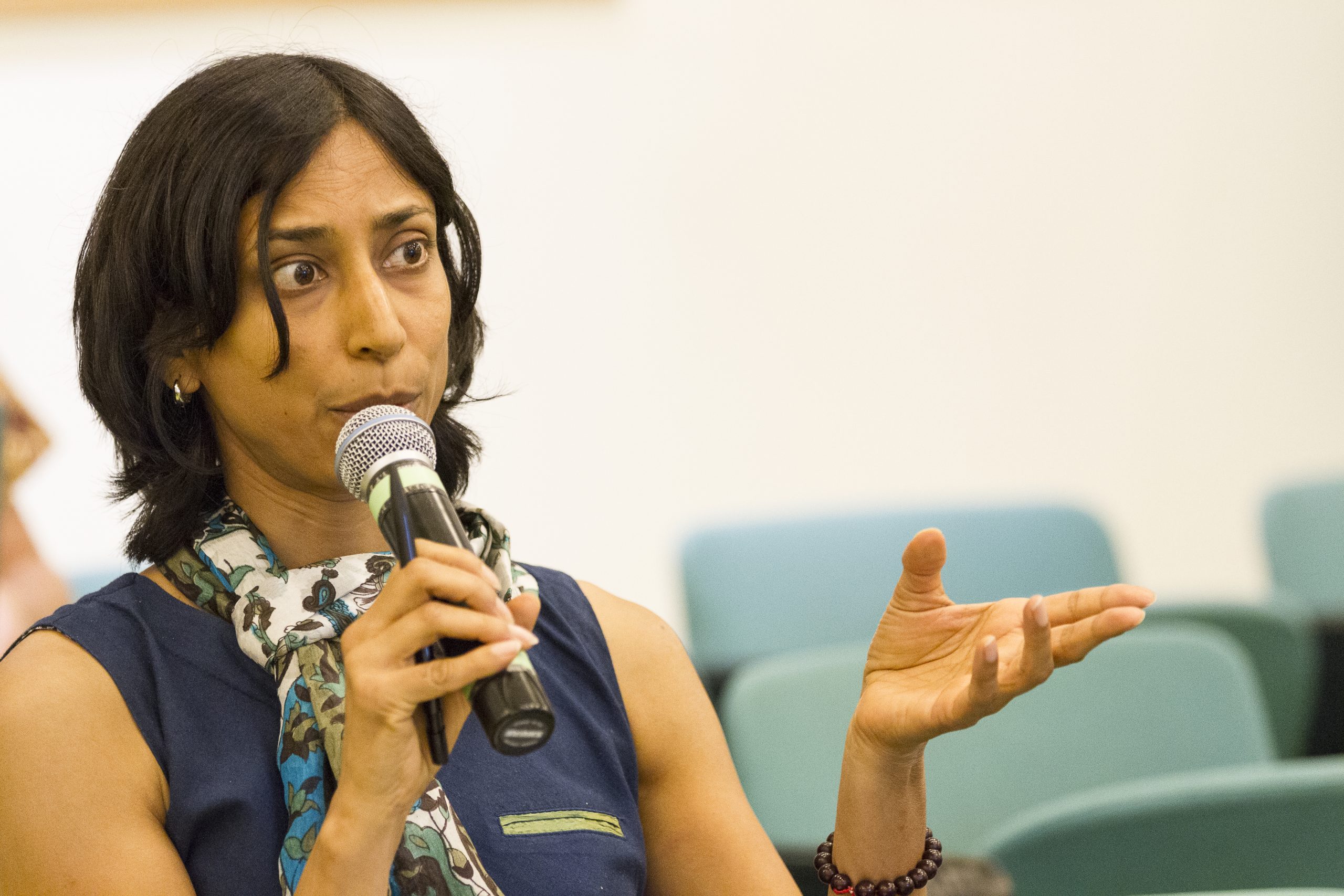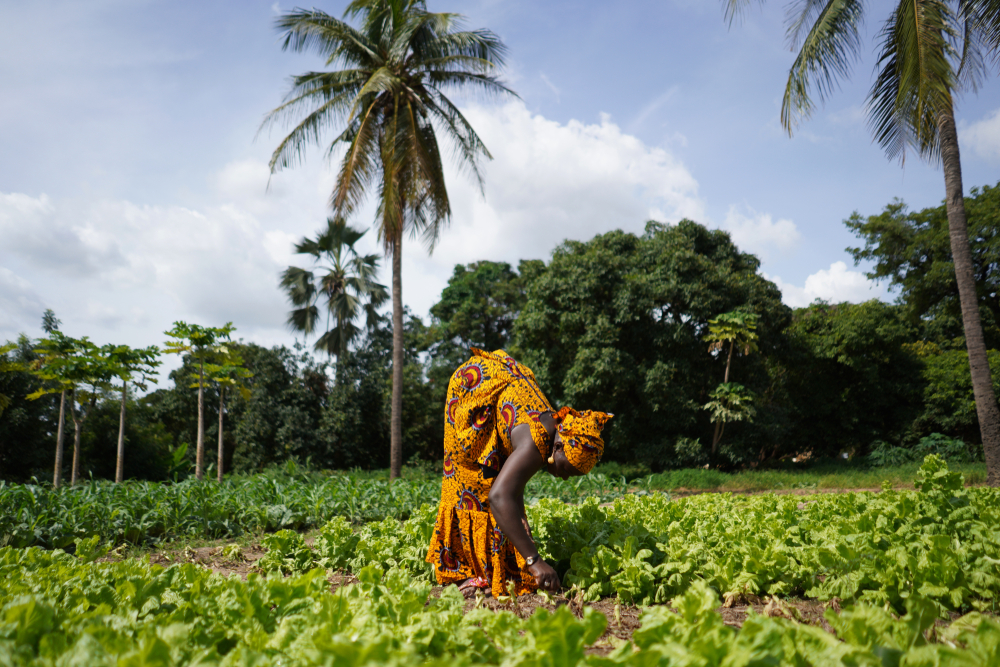2021-05-18
For centuries, communities living in or near forests have sustainably managed and safeguarded them. Researchers and policymakers are increasingly recognising that efforts to slow and reverse deforestation today depend on the involvement of these communities, and that their tenure and sustainable use rights must be strengthened to allow this to happen. Promoting this process, and understanding why it is not always successful, is central to the work of Safia Aggarwal, a Forestry Officer at the United Nations’ Food and Agriculture Organization (FAO) in Rome.
Safia’s primary focus is on strengthening tenure rights of local communities and smallholders to forests and forest resources, to foster sustainable forest management. Her main interests are in promoting human rights and livelihood concerns in natural resource management, and enhancing understanding of critical property rights issues to that end. She is also a member of the Tenure Facility’s Advisory Group. Her latest paper, “Tenure reform for better forestry: an unfinished policy agenda,” can be read here.
Why is growing awareness of the role played by indigenous people in protecting forests not translating into strengthened land rights for Indigenous Peoples?
There are several obvious and less obvious reasons, and one of course is a lack of political will in many countries – I think governments are wanting to retain control over valuable forest resources. But there are other reasons as well: forest departments trained in western forestry models continue to undermine traditional knowledge and associated forms of forest management systems, despite the evidence of its effectiveness, which is unfortunate. We’ve also found in that in many countries forestry departments are very poorly funded, and they lack technical and administrative systems and capacities, hence slowing down rights formalisation processes.
What are the main challenges to securing more tenure: is it a lack of frameworks? Is it that the laws are there and we just need to implement them better, or is it very much a mixed picture?
I think it is a mixed picture, and we’re seeing both sets of challenges. For example, in much of Africa and parts of South-East Asia we are seeing weak legal frameworks that fail to recognise customary forest rights, whilst in much of Latin America, legal frameworks are very strong. In fact, 16 countries in Latin America have provisions recognising customary land rights for indigenous communities in their constitutions. Regarding implementation of the laws, it seems to be weak across the board, unfortunately. In other words, countries are finding it easier to pass laws, but much more difficult to implement them because of the lack of financial resources and the associated cultural shifts needed within the government. On a positive note however – increasing numbers of countries around the world are recognising community land and forest rights in their legal frameworks, so I think we are seeing progress. There are other positive trends: increasing numbers of countries are providing more robust rights to communities – not just to degraded forests, or subsistence use of non-wood forest products, as in the past. Today countries are recognising community rights to more intact and good quality forests, used customarily, including the commercial use of wood and non-wood forest products. This provides much stronger incentives for communities to participate in forest management.

"There are some examples to be learnt between countries, and the more that exchange happens the more governments will see better options available to them, rather than only engaging with the extractive industries. "
What factors are driving these positive trends and amplify their impact?
I think that countries are learning from each other, there’s some exchange and observations about what is happening, and countries are realising the potential of recognising forest rights, and not just for improving the forest, but also responding to the challenge of climate change, improving rural livelihoods, and also contributing to domestic demand for wood and non-wood forest products. I think that’s very hopeful.
To what extent is rising lawlessness and regulatory rollback of environmental and indigenous rights during and possibly after the pandemic a risk to current progress?
It is a serious challenge for sure – during the pandemic some things were expected, for example that the rights registration process would slow down, because land administration systems were being thinly staffed, or were closed part of the time. But there are other trends which are very disturbing, for instance governments issuing permits for the clearance of forests or adopting laws which are controversial or provide industry access to forests. Worse yet, as governments emerge from the pandemic and jump-start economies, they are likely to attract more investments, further putting at risk the livelihoods of tenure insecure communities. Those are troubling trends, and it is short-sighted, compromising long-term sustainability of the forests, as well as local economies.
In a post-pandemic world, how do we encourage governments to step away from short-termism and towards investing more long-term in people, in environment and in the ecosystems that we need to manage the current crisis?
I think we can do better with exchanging experiences. Some countries have succeeded a bit better in investing in people and the environment in the past recent decades. For example, China has made some significant efforts: they’ve provided the right incentives to smallholders and communities to improve forests, for timber production and meeting domestic timber demand, but also by programmes compensating them for other land-uses, such as through the conversion of cropland to forests and grasslands. So, I think there are some examples to be learnt between countries, and the more that exchange happens the more governments will see better options available to them, rather than only engaging with the extractive industries.

"Very importantly, governments are not realising that rights recognition is not the place to stop..."
What are the key building blocks that need to be in place to be able to work towards strengthening tenure rights for communities?
First of all, we do need the legal and/or the regulatory framework, which is absolutely essential. But also building institutional capacities to formalise rights and provide post-rights formalisation support. Very importantly, governments are not realising that rights recognition is not the place to stop. When for example you look at the agricultural sector, farmers are provided billions of dollars of support in the registration of rights, for agricultural inputs, for the procurement and marketing of produce, in accessing loans and insurance, etc. Likewise, when concessions are granted to timber and other companies, governments provide billions of dollars to them for subsidised access to land and forests, funds for research and development, financing of roads and infrastructure, subsidised energy, production, processing, distribution and sale of forest products. We rarely see such assistance going to communities despite their contribution of land and labour. This is really limiting what communities can do with their rights, and certainly in competing with large companies.
What role can the international community play to better support communities to protect and manage their forests?
If you look at the total amounts of money going towards forestry and climate change projects, the funds going towards securing the rights of indigenous peoples and local communities are actually proportionately very small – so, it’s absolutely critical that more forestry funds be diverted towards securing tenure given the urgent need. Also, it is important that donors coordinate their support in-country – for example in Peru various donors supported complementary activities to strengthen tenure rights and livelihoods of indigenous communities, which helped a lot in speeding up the work. I think that such coordination is needed in other countries as well.
To what extent can the Tenure Facility be a model for this going forward?
The Tenure Facility can serve as a model to some degree in its direct support to communities in securing their rights, but as mentioned earlier we mustn’t stop at rights formalisation. Many indigenous and rural people are migrating to cities to meet livelihood needs. If we want to protect our forests, we need to build rural economies that can contribute to sustainable forest use and management. In that sense, we need to go beyond what the Tenure Facility can do on its own and support community-based forest governance and diverse forest and farm-based livelihoods. And of course, governments will have to take the vision forward, because donors cannot drive the development agenda in a country.
Picture credit: ©FAO/Roberto Cenciarelli
Articles